I UES EXPLORER
NURTURING LOCALLY CONFIDENT, GLOBALLY COMPETENT CITIZENS


Inthisedition:
Meettheteam
2023 E/NA Lesson Idea for Chapter4.1
2020 N(T) Lesson Idea for Book2AChapter5
Swiss Cottage Secondary School’se-SBAJourney





NURTURING LOCALLY CONFIDENT, GLOBALLY COMPETENT CITIZENS


Inthisedition:
Meettheteam
2023 E/NA Lesson Idea for Chapter4.1
2020 N(T) Lesson Idea for Book2AChapter5
Swiss Cottage Secondary School’se-SBAJourney




 Ms Lim Yan Li, CRDO
Ms Lim Yan Li, CRDO
SS exposes students to societal issues and helps them understand these societal concerns from multiple perspectives. It reminds students (and even us as adults) that we can do our part to contribute to the betterment of the communities or places we live in.

Learning SS helps students to analyse and navigate real world issues that they will face in the future. It equips them with the necessary skills to be critical thinkers who are discerning of the information they consume. SS also develops empathy in students as they explore multiple perspectives and consider how they can do their part to contribute to society.
Ms Tan Rou Jing, CRDO Mr Shaun Sim, CRDOSS is important because it is a window into the world for the young. Being informed about real world issues allow students to understand the roles that they can play in shaping the world into a better place for themselves and generations to come.


 Ms Adeline Phua, Deputy Director / Humanities
Ms Adeline Phua, Deputy Director / Humanities
SS is the only subject which enables our students to look at societal issues from different perspectives and form a balanced view on the different issues. With a better understanding of these issues, SS empowers students to be discerning and participative citizens.

SS is important in developing important knowledge, skills, values and dispositions to be effective citizens. As a subject, SS provides opportunities for students to think critically about societal issues from multiple perspectives and learn how to discuss these issues with their peers. These learning experiences in the SS classroom therefore prepares students for citizenship and to contribute responsibly to the betterment of society.

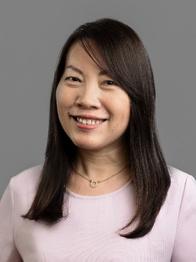


 Dr Elaine Lim, Master Specialist / Humanitie
Dr Elaine Lim, Master Specialist / Humanitie
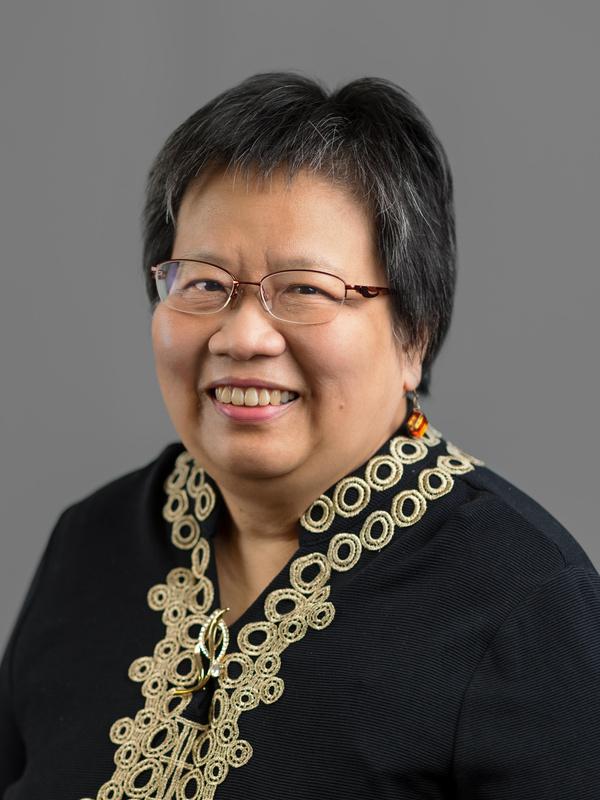
Social Studies provides students with opportunities and experiences to believe in the common good, to dream of the best for others, and to make it happen … to create a society and world that we want to live in.

SS is a multi-disciplinary subject that provides a holistic understanding of the world we live in, helping us comprehend the complexities of societies, local issues and global issues. It uniquely applies a Singaporean perspective to the topics studied, which I find particularly valuable.





SS means the future. The subject guides our students to understand the world around them and to reflect on how they can contribute to society to make it a better place for all.


Social Studies means life to me. The subject creates opportunities for students to understand real world issues, analyse societal concerns and needs. The subject also encourages students to reflect on how they as citizens can contribute to the common good whereby our lives are improved and better than yesterday.

Interested to find out what a CRDO, CPO or Specialist does?
Please reach out to our AD, Vikneswari @ Vikneswari _RAJENTHIRAN@moe.gov.sg
THIS SECTION FEATURES A LESSON IDEA FOR CHAPTER 4.1 ADDRESSING THE NEEDS OF SOCIETY IN THE 2023 E/N(A) SYLLABUSES.
Issue 1
Inquiry Focus
Guiding Question
Topic
Key Understanding
Exploring Citizenship and Governance
Working for the good of society: Whose responsibility is it?
How can we work together for the good of society?
Addressing the needs of society
Both citizens and government can play complementary roles in working for the good of society
This section draws upon the following resources:
Suggested lesson idea for Chapter 4.1 - hosted on OPAL 2.0
1. IDT Lesson 4.1 Addressing the needs of society: How can citizens and the government work together to address the needs of society?
2. Singapore Teaching Practice’s Teaching Action: Jigsaw
4
3. 2023 SS E/N(A) e-TLG Section 3 2 1 Planning for Discussion-based Inquiry: Before the Discussion, pages 168-169- hosted on OPAL 2.0
5
2023 SS E/N(A) e-TLG: Section 3 4 5 Practice and Application of Differentiation in Social Studies- hosted on OPAL 2.0
Teachers may refer to 2023 SS E/N(A) e-TLG – Creating a conducive learning environment, pages 168-169, for more information about suggested shared ground rules for discussion. This helps students to remain respectful and open to discussion which helps to set the ground for the development of effective collaboration (a key 21st Century Competency) Set shared ground rules for discussion with the class before students embark on their discussion.
Click here for further guidance on using this STP Teaching Action to help students learn actively as they discuss questions in pairs and with the whole class.
Using Think-Pair-Share, get students to activate their prior knowledge by discussing and answering the question in the Interactive Thinking Tool activity in the IDT (“Let’s Get Started!” activity tab).
Show students’ responses on the screen and invite a few pairs to share their responses.
Highlight to students that different groups of people in Singapore have different needs, and citizens and the government can work together to address some of these needs Inform students that in this lesson, they will explore how citizens and the government work together to address the needs of one group of people – the elderly.
Step 1

Organise students into groups of three – this will be their “home group ” . In each group, assign each student a different letter: A, B or C
REFER TO THE STP FOR MORE DETAILS ON THE TEACHING ACTION: JIGSAW.
Step 2
Ask students to leave their “home groups ” and form groups of no more than five students who were assigned the same letter – this will be their “expert group ’ .

Teachers may wish to pre-arrange groupings based on students’ readiness level. Consider placing students with lower readiness in Group A, which will tackle questions focusing on a singular perspective (efforts by individuals), while students in Groups B and C will tackle questions that compare the efforts of two groups of people in meeting the needs of the elderly. Refer to e-TLG Section 3.4.5 Practice and Application of Differentiation in Social Studies, pages 241-249 for other strategies on differentiation

Step 3
Instruct each expert group to read the relevant sections of the IDT (“Let’s Explore!” activity tab) on the efforts by individuals, community groups or the government to address the needs of the elderly
In each group, students will discuss and answer the questions that are relevant to their group and document their responses on online collaborative tools such as Padlet.
Expert group A: Efforts by Individuals
1.
What prompted Ms
Gillian Tee to set up
the Homage app?
(see IDT Question 1a)
2.
What motivates Mdm
Malligesvari to
volunteer?
Teachers may refer students to some of the multiplechoice questions in the IDT (“Let’s Explore!” activity tab) to help students answer some of the questions in this table.
3
How did Mdm
Malligesvari decide on the areas she could
volunteer in? (see IDT
Question 2a)
4.
Why is Mdm
Malligesvari and Ms
Gillian Tee’s roles as individual volunteers crucial in helping the elderly? (see IDT
Question 1b and 2a)
Teachers may select two to three questions for each group to answer TEACHERS
Expert group B: Efforts by Community Groups
1.
What prompted
citizens to form a group like RSVP
Singapore? (See IDT
Question 4)
2.
Why are the efforts of community groups like RSVP Singapore crucial in addressing the needs of the
elderly? (see IDT
Question 5)
3
How are the roles of community groups such as RSVP
Singapore and volunteers such as
Mdm Malligesvari different? How would you describe their relationship?
Expert group C: Efforts by the Government
How does the government address the needs of the elderly? (see
IDT Question 6) 1. Why is the government’s role crucial in addressing the needs of the elderly? 2.
In addressing the needs of the elderly, how do the efforts
in their “home groups”
Remind students about the shared ground rules for discussion set out earlier in the lesson.
Step 1
Students return to their “home group ” and take turns to present their answers to the other members of their “home group ” .
Step 2
Invite students to come up with novel ways of meeting the needs of the elderly! This can help to encourage the development of the 21st Century Competency of inventive thinking where students explore possibilities and generate novel and useful ideas.
Using what they have learnt, students discuss and come up with two ways in which the government and citizens (as individuals and community groups) can work together to address the needs of the elderly. Students may wish to document their responses on the same online collaborative tool used earlier (e.g., Padlet).
Step 3
Invite various “home groups ” to share their responses. Spotlight a few responses as documented on the online collaborative tool (e.g., Padlet) to clarify misconceptions and consolidate learning.
To check for students’ understanding of the complementary roles of citizens and the government in addressing the needs of society, teachers can instruct students to complete the IDT lesson (“Let’s Reflect and Consolidate!” activity tab) as homework

Next lesson: In the classroom, invite students to share who they think plays a more important role in addressing the needs of society – the citizens or the government Teachers may also invite students to share real-life experiences they may have had in addressing the needs of the elderly or how they think they can contribute to meeting the needs of the elderly.
For a visual overview of this lesson, please refer to the design map on the next page.
The design map, which is easily shareable, helps to create a culture of sharing lessons within the unit and helps everyone visualise how the lesson flows A design map is particularly helpful for lessons with lots of movement from one activity to the next as the arrows indicate 1) how the data from one activity is used for the next activity and 2) the suggested sequence of the IDT lesson. The various colour-coded boxes reflect the different active learning processes and where the various student-student, teacher-student, and student-content learning interactions are.

Download an editable copy of this design map here if you wish to further customise it for your own lesson!
Students activate their prior knowledge of different groups of people in Singapore who face challenges in meeting their needs
In their “expert groups ” , students gather information from the coursebook, the IDT, and the Internet about the efforts of individuals, community groups, and the government in addressing the needs of the elderly
Students reflect on their understanding of the complementary roles of citizens and governments and what they can do as individuals in addressing the needs of society
Students provide responses on how the roles of individuals, community groups, and the government are different and how they can work together to address the needs of the elderly.
Lesson ideas for Issue 3 Chapters 8, 9 and 10 have been published! Click HERE to access the lessons.
THIS SECTION FEATURES A LESSON IDEA FOR BOOK 2A CHAPTER 5 OF THE 2020 NORMAL (TECHNICAL) SYLLABUS.
Book 2A
Inquiry Focus
Guiding Question
Topic
Key Understanding
Resolving Conflict and Building Peace
How far can we contribute to peace and security?
What can we do to maintain Singapore’s peace and security?
Diplomacy
Everyone can help to build peace in Singapore
This section draws upon the following resources:
Book 2A Chapter 5, pages 88 to 97
1. Lesson idea for periods 25 and 26 – click here to access the lesson idea 2. SLS lesson on The Role of ASEAN – click here to access the lesson 3 SLS lesson on The Role of UN – click here to access the lesson 4.
5
2020 SS N(T) TLG, Section 4 3
5 Discussion in the Social Studies Classroom, pages 70-79, hosted on OPAL 2.0
Step 1
In discussing diplomacy, teachers can clarify misconceptions such as the view that diplomatic exercises are a country’s way to assert superiority over another country or that having diplomatic ties with a country means we must always support everything that country does
Refer students to the images on Book 2A, pages 88 - 90 that depict diplomats from different countries engaging in various diplomatic events. Ask students what they think is happening in the images. This can be done by getting verbal responses from the class or through the Interactive Thinking Tool (ITT) on the SLS Document their responses and share them with the class
Step 2
Ask students to think about and share their responses to the following questions:
Why is it important for countries to have strong and positive relationships with each other?
Link students’ responses to the definition of diplomacy, which is the building of strong and positive relationships between countries to maintain peace and prevent conflicts from occurring. Teachers can analogise this concept to how students build and maintain strong and positive relationships with their friends. through stories and images
What might happen if countries do not have strong and positive relationships with each other?
Step 3
With reference to pages 89 and 91 of the coursebook, explain to students what bilateral and multilateral relationships are. Ask students the following:
How they think countries can form such relationships
What they think countries should not do when trying to form strong and positive relationships. (As a scaffold, teachers can first ask students what friends should not do when trying to form strong and positive relationships.)
Indicate to students that the activities in this lesson will explore the answers to the above two questions
In discussing diplomatic relations and conflicts between countries, teachers may face possible challenges such as when different opinions in class may inflame students’ emotions or when students make offensive remarks In the case of the latter, teachers may surface the remarks for general discussion by reframing them in the third person For instance, teachers may say, “Some people hold the view that Why do you think they hold such views?” and then, “Why do others disagree? What view do they hold?” Separating the issue from the students who made the offensive remark will help students engage in discussions about the remark in a more objective manner and prevent the discussions from becoming personal Teachers can refer to the 2020 SS N(T) TLG Section 4 3 5 Discussion in the Social Studies Classroom, pages 76-78, for more information on facilitating discussions and responding to students’ responses.
Have students complete either SLS lesson depending on their interest:
SLS lesson on The Role of ASEAN –click here to access the lesson
SLS lesson on The Role of UN – click here to access the lesson
After students have completed the SLS lesson of their choice, teachers may choose to spotlight selected responses from both lessons to highlight how Singapore has taken part in ASEAN and UN efforts and why it was important to do so.
Split students into two groups to research the following:
1. Examples of Singapore working together with/supporting countries in South-east Asia. Have students answer the following questions:
What did Singapore do in those cases?
Why was it important to do so?
2. Examples in Southeast Asia where countries did not have strong and positive relationships.
Have students answer the following questions:
What caused the countries not to have strong and positive relationships?
What can we learn from these examples?
Teachers can pre-select two to three case studies to scope the task and suit the profile of their students
Blended learning opportunity!
Teachers can assign this part of the lesson as homework by having students complete their research before the next lesson
through a Speed Dating activity and class sharing
Step 1
Have students go through a Speed Dating activity. Each student is to present their research findings to a classmate
The classmate they are presenting to should then add another reason why it was important that Singapore worked with or supported other countries / what they can learn from examples where countries did not have strong and positive relationships.
After one minute, they then move on to the next student. Repeat this process for two to three rounds.
When discussing controversial issues, teachers may choose to maintain an objective position. Teachers can exercise impartiality, sharing their opinions and substantiating them with logical reasoning and evidence. These views should not be imposed on students and should be framed as one point of view. Teachers can refer to the 2020 SS N(T) TLG Section 4.3.5 Discussion in the Social Studies Classroom, page 78 for more information on sharing their own points of view.
Teachers may consider the use of other strategies such as Think-Pair-Share to suit the profile of their students Teachers can refer to the 2020 SS N(T) TLG, Section 4 3 5 Discussion in the Social Studies Classroom, page 73 for more information on Speed Dating, Think-Pair-Share and other discussion strategies
Step 2
After the Speed Dating activity, invite some students to share their responses with the class, including what their classmates have added on to their points Get different students to share their responses to get a range of examples This is also a good chance to clarify misconceptions should they arise.
Step 3
Wrap up by linking the students’ sharing to our collective responsibility as a nation to build and maintain peace in the world through building strong relationships and acting responsibly as a global community.
If there is time after the activities, ask students to share their views on the following questions to further explore diplomacy:
Does maintaining strong and positive diplomatic relationships mean that we must always agree with our diplomatic partners?
What happens if countries that we have strong and positive relationships with are in conflict with each other?
Teachers can help students relate to the above questions by analogising the concept of diplomacy to their interactions with their friends Teachers can also reaffirm Singapore’s stance when it comes to foreign relations and conflicts e g that we maintain strong and positive relations with both sides but that it does not mean we have to agree with everything that they do; that all states have a legitimate right to defend themselves but that in exercising this right they have to comply with international humanitarian law. through crystallising what they have learnt
Have students answer Questions 3 and 4 on page 97 of the coursebook Teachers may also consider having students post their reflections online using the ITT on the SLS.
Students activate their prior knowledge through images depicting real-life examples
Students reflect on their understanding of why it is important for countries to maintain strong and positive relationships with each other
Students gather data from SLS activities and through researching examples of how Singapore has worked with or supported other countries and examples where countries were unable to maintain strong and positive relationships
Students exercise reasoning by thinking about how these examples reflect the necessity and benefits of diplomacy. They explore different views from their classmates during the sharing
At the 2023 Express/Normal (Academic) (E/N(A)) Syllabus Launch in 2022, the Singapore Examinations and Assessment Board announced that a national e-examination for N(A) Social Studies (SS) would be conducted in 2024. To prepare students for the e-examination, information on how to conduct e-School-Based Assessment (e-SBA), including an end-to-end user guide for teachers on administering e-SBA on the Student Learning Space (SLS) using SSOE ACAD devices with a lockdown account, was shared with SS teachers. In this edition of Voices, the iSSues Explorer team sat down with Ms Kelly Tan from Swiss Cottage Secondary School (SCSS) to understand more about the school’s expeirence with carrying out e-SBA last year.
The team wanted to give our students a head start since it was announced that a national eexamination for GCE N(A)-Level SS Paper 1 would be conducted in 2024. We wanted to expose the students to answering assessment questions on digital platforms so that they would be familiar with keying in their responses and build confidence.
We conducted e-SBA thrice. We first tried out e-SBA for Weighted Assessment (WA) 2 and subsequently, carried it out for WA3 as well as the End-of-Year examinations. We found that the deck of slides sent by CPDD at the start of last year to be useful in guiding us through the e-SBA process, and in resolving any issues that we had faced during our e-SBA journey.

The deck of slides is also posted on the SSS Wiki page here.
With the aim of familiarising students with the conditions of national eexaminations we followed the hybrid approach of having a physical question paper with students answering the questions in a digital answer booklet (DAB) We did face the issue of students not annotating their sources on the question paper in our first run of the e-SBA and had to remind them to bring their stationery along to do this in subsequent runs
We had the Secondary 3 N(A) students sit for the e-SBA last year, and it was a cohort of 40 students. The students took the e-SBA in one sitting. Since we have two computer labs, equipped with 40 SSOE laptops each, we could have 20 students in each lab, with an unused SSOE laptop in between the students to ensure the integrity of the assessment.
WERE THERE ANY LOGISTICAL AND/OR TECHNICAL CONSTRAINTS THAT THE TEAM FACED?
Fortunately, given our favourable ratio of SSOE laptops to students (2:1), we did not run into any logistical constraints while carrying out the e-SBA. However, we found it important to work closely with the Head of Department (HOD) / Technology for Learning (TFL) to ensure that any technical constraints that we might face would be anticipated or easily rectified
The HOD/TFL plays an integral role as he is essential in overseeing the logistics of the eSBA, such as applying for the lockdown accounts for us to host the DAB on the SLS. Once we decided when we would embark on our e-SBA journey, we worked closely with the HOD/TFL to ensure that the lock down accounts were successfully secured for our assessment dates.
On the SS unit’s front, we did our due diligence before the actual e-SBA to ensure that the lockdown accounts were functioning as intended, especially for high-stakes assessments. We found it useful and reassuring to do a couple rounds of checks on these lockdown accounts as well as using students’ accounts to ensure that students can access the e-SBA on SLS without a hitch. We also previewed how students would receive their results by using students’ accounts to access the results.
CONSIDERING THAT STUDENTS MIGHT NOT HAVE SAT FOR ONLINE ASSESSMENTS BEFORE; HOW DID THE TEAM PREPARE FOR E-SBA?
In preparation for the e-SBA, we conducted practice sessions to acquaint students with the digital platforms before the actual assessments We went through the steps to log into the lockdown operating system, ensured that students had access to their SLS accounts, were able to navigate through the DAB and had no issues typing out their answers We also ensured that parents were informed about each upcoming e-SBA and that their child was sufficiently prepared for online assessments.
WHAT WERE SOME CHALLENGES THAT THE TEAM FACED WHEN CONDUCTING E-SBA AND HOW WERE THESE RESOLVED?
In the first run of the e-SBA, a common issue that we faced was the inability of students to log into the SLS. We had our IT support staff on standby to help students reset their passwords to ensure that we could start the e-SBA on time. Subsequently, before the next runs of the e-SBA, we ensured that students were able to log into their SLS and that they remembered their passwords for log in. However, we continued to request that our IT support staff be on standby.
Another issue we faced was the lack of or loss of connectivity on devices during the e-SBA Again, we had IT staff on standby who could quickly resolve some of these issues In addition, there were extra SSOE devices on hand to replace those that were not functioning so well.
During the first run, some students clicked on the “Submit” button while there was still time remaining, and we had to release the DAB back to the students and remind them to check their answers again. To mitigate this in subsequent runs, we had students arrive at the venue ahead of time and ran through the administrative instructions with them before starting the assessment. For example, we ran through the various tabs that students would see in the assessment portal, and students were reminded to only click on the “Submit” button when told to do so. We found this to be helpful as the subsequent couple of runs of the e-SBA were generally smooth sailing Encouraging students to report slightly earlier to the examination venue also allowed us to ensure that they could log in to the devices as well as the SLS successfully This allowed for any troubleshooting to be done by the IT support staff before the examinations as well.

A snippet of the e-SBA instructions used in class, students were also each provided with an instruction sheet with similar instructions
We also prepared an e-SBA briefing instruction sheet for each student, given that there were more instructions that they would now have to follow as compared to sitting for a traditional, written assessment. Another point of consideration for doing this was that students who were seated at the end of the lab might be unable to see the instructions as clearly as those who were seated at the front, especially when they were logged out unexpectedly Some areas covered in this instruction sheet are how to power on and access the correct operating system on the Exams SSOE device, logging into SLS with a whitelisted link, etc. This will form the e-examination instructions that invigilators will have to go through before the start of the paper, in addition to the usual internal school examinations instructions. Writing paper and stopwatches were provided for the invigilators so that in the event of a power outage or any technical issues that could not be resolved in a timely manner, affected students would be able to continue answering the examination questions and be compensated for the time that they had lost.
The teachers took some time to become familiarised with the e-return of scripts but e-marking was generally smooth. This was because we were able to mark as we would on hardcopy and students were reminded of the marking conventions upon return of the scripts. We also capitalised on the affordances of technology and SLS e-marking by using colour coding in our marking conventions. For example, green underlines were used when answers were accurate; blue ones helped students realise that although their answers were somewhat accurate, they were either incomplete or not clearly explained; and red underlines were for misinterpretations or incorrectly-used techniques
We also like that e-marking on the SLS allows for synchronous marking such that level teachers can mark concurrently to facilitate team-marking of different questions.
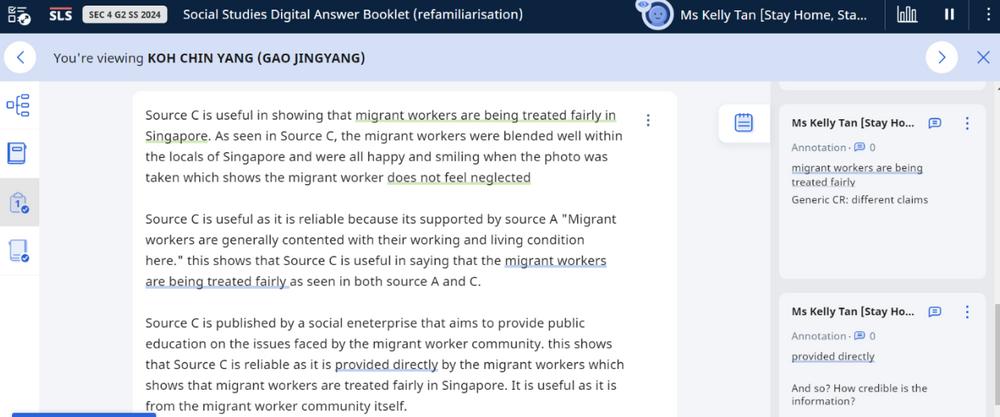
One area that we are looking to improve would be the e-return of scripts to students We are looking into printing students’ DAB for them to ensure that they can better follow their teachers when they are going through the scripts.
We have also recognised that we might be faced with a larger cohort size in the future and have taken active steps to prepare for this. Our HOD/TFL, has already started the process to procure more SSOE devices as well as identifying larger examination venues to accommodate a larger cohort of students sitting for e-SBA.
Over the past year, your department might have carried out e-SBA for SS too If so, we would love to hear from you about the following: what went well in your implementation of e-SBA; what were some challenges faced in the implementation of eSBA and how these challenges were addressed; and learning points you gleaned from the process of implementing e-SBA
We hope to hear from you and look forward to the sharing of your best practices for the benefit of the fraternity!
Keep a lookout for an updated e-SBA guide that will be coming to your email inbox soon!
In this 3-part MLU, you will find out about Socratic Seminar as a discussion-based strategy. Learn how you can engage students in a discussion through a Socratic Seminar in the Social Studies classroom.

Part 1: What is Socratic Seminar?

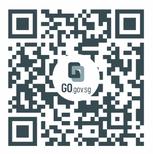
Click here to access Part 1 of the MLU on OPAL 2.0 or scan the QR Code!


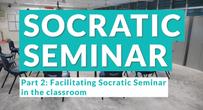
Part 2: Facilitating Socratic Seminar in the classroom

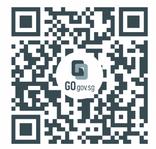

Part 3: Consolidating Socratic Seminar in the classroom




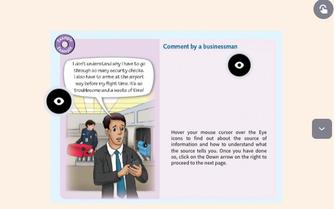



Click here for a promotional video of the virtual tour
Begin this journey at the former Supreme Court, which is the National Gallery Singapore, where you embark on an exciting journey to rediscover old courtrooms, hidden tunnels and holding cells. Canvass artefacts and solve puzzles as you explore our judicial legacy and processes. The tour then transports you to the present-day Supreme Court. Learn how our rich traditions have adapted to modern times and get a glimpse into the Courtroom of the future.

This virtual tour is suited for audiences aged 13 and above and takes an estimated one hour to complete. For optimal performance, this virtual tour should be experienced on a PC.
Keen to learn more about Singapore’s Judicial history and to explore the former and present-day Supreme Court?
Join the 360° virtual tour experience which explores the Supreme Court’s history and workings of the justice system through engaging and informative content.
Challenge yourself and get onto the Leader Board with a High Score. The top 3 winners each month will be invited to visit us for a physical tour of The Learning Court and Heritage Gallery, and take away some interesting and unique mementos.
Click here to experience the virtual tour.
This seminar, organised by the Middle East Institute, National University of Singapore, will unpack the Israeli-Palestinian Conflict, and Singapore’s Foreign Policy.
Date: Tuesday, 16 April 2024
Time: 2:30pm-5.30pm
Venue: MND Building, MND Auditorium, 9 Maxwell Road S(069112)
To sign up, please scan the QR code on the right by 12 April 2024

Keying in of G1 SS / SS N(T) Grades in Keying in of G1 SS / SS N(T) Grades in School Cockpit (SC) 2.0
School Cockpit (SC) 2.0
The G1 SS / SS N(T) grades should be reflected in the Holistic Development Profile (HDP) at the end of each semester for Lower Secondary levels. The grades are Pass (PA), Pass with Merit (ME) and Pass with Distinction (DI) Students who do not attempt the PT should be given “Ungraded” in the reporting of assessment grades at the end of each semester.
Sec 1 G1 SS and Sec 2 SS N(T)
Grades for Sec 1 G1 SS and Sec 2 SS N(T) students are to be entered in the: “Term 2 Weighted Assessment” column for Semester 1; and “End-of-year Exam” column for Semester 2.
Upper sec ss N(T)
Schools have the option of reflecting the SS N(T) grades at the end of the first or second semester depending on whether the syllabus is allocated double periods in the first or second semester.
Grades are to be entered in the “Overall” column

Example of entering of SS N(T) grades in School Cockpit 2.0 for Lower Secondary N(T) levels
E
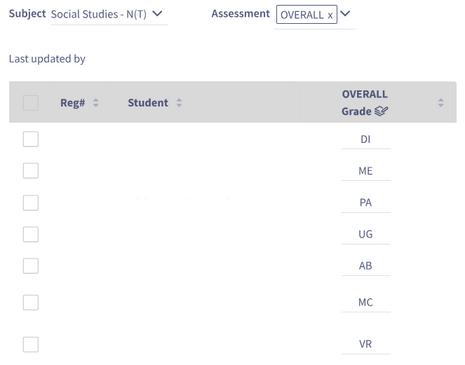
Grade Reporting
If you know any Social Studies teachers who have not been receiving our e-newsletters; or are not on our mailing list (especially Beginning Teachers), please drop us an email at sim jie kai@moe.gov.sg